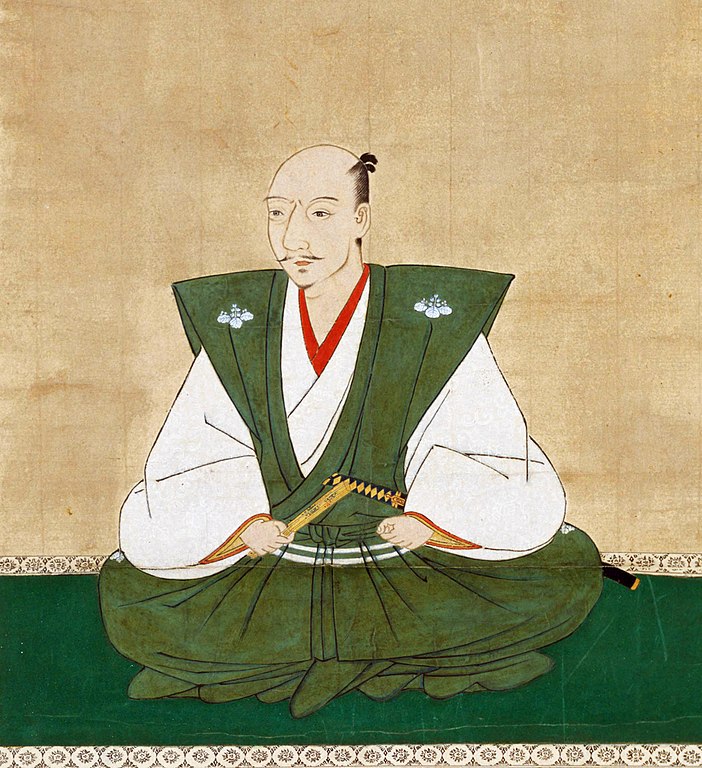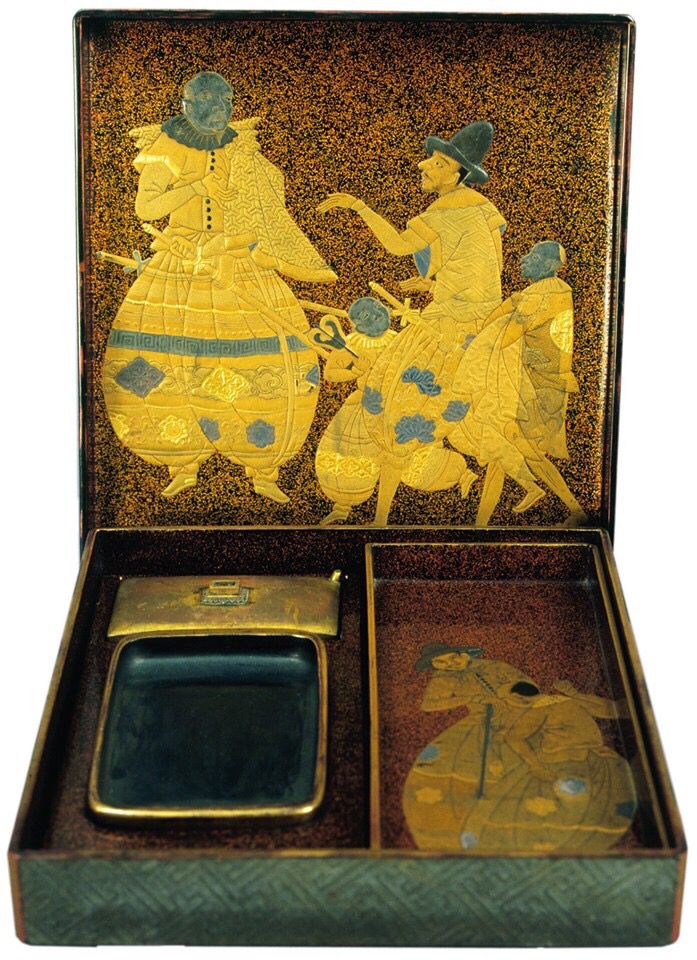Introduction
Imagine a towering African warrior, clad in samurai armor, standing beside one of Japan’s most powerful feudal lords. This is the extraordinary story of Yasuke, the Black Samurai. His journey from Africa to Japan, and his rise to samurai status under Oda Nobunaga, defied the rigid social structures of the time.
Yasuke arrived in Japan in 1579 as a servant to Jesuit missionary Alessandro Valignano. His unique appearance quickly captured the attention of Nobunaga, who was fascinated by Yasuke’s strength and demeanor. Nobunaga granted Yasuke the rare status of samurai, integrating him into his court.
Yasuke’s life was filled with honor and peril, including his presence at the infamous Honnō-ji Incident, where Nobunaga met his tragic end. Yasuke’s story continues to resonate, symbolizing cultural exchange and resilience. Join us as we explore the captivating journey of Yasuke, the first African samurai.
Yasuke’s Origins
Yasuke is believed to have been from Mozambique. Born in the mid-16th century, his early life remains largely unknown. He arrived in Japan in 1579. Yasuke came as a servant to Alessandro Valignano, an Italian Jesuit missionary. Valignano was responsible for overseeing Jesuit missions in Asia. The Jesuits brought Yasuke to Japan to help with their work. Yasuke’s arrival coincided with a period of intense European interest in Japan. His presence was meant to impress the Japanese with the reach of Jesuit influence. Little did they know, Yasuke’s story was about to take an extraordinary turn.
Arrival in Japan and Meeting Nobunaga

Yasuke arrived in Japan in 1579, causing an immediate sensation. His height and dark skin were unlike anything the Japanese had seen before. Crowds gathered to see him, marveling at his appearance. News of this remarkable foreigner reached Oda Nobunaga, a powerful daimyo.
Nobunaga was known for his curiosity and openness to foreign influences. He summoned Yasuke to his court. Upon meeting Yasuke, Nobunaga was fascinated. He initially suspected Yasuke’s skin was inked, but after Yasuke washed, Nobunaga confirmed it was natural. Impressed by Yasuke’s strength and demeanor, Nobunaga decided to take him into his service.
This decision marked the beginning of Yasuke’s unique journey. He became a trusted retainer and was soon granted the status of a samurai. Nobunaga gave Yasuke a katana and a residence, integrating him into the samurai class. Yasuke’s presence at Nobunaga’s side symbolized a significant cultural exchange, setting the stage for his extraordinary life in Japan.
Yasuke’s Life as a Samurai
After joining Oda Nobunaga’s service, Yasuke was officially made a samurai. This status was a rare honor for a foreigner in Japan. Nobunaga provided Yasuke with a katana, a samurai’s weapon, and a residence.
Role in Nobunaga’s Court
Yasuke quickly became an important figure in Nobunaga’s court. He was known for his strength, loyalty, and impressive stature. His duties included acting as a bodyguard and participating in various military campaigns.
Nobunaga’s Progressive Attitude
Nobunaga valued Yasuke not only for his physical prowess but also for his unique perspective. Yasuke’s presence at court was a testament to Nobunaga’s progressive attitude towards foreign cultures. Yasuke’s integration into the samurai class was significant, symbolizing Nobunaga’s openness to diversity.
Service and Battles
Throughout his service, Yasuke demonstrated his dedication and courage. He fought alongside Nobunaga’s forces in several key battles, proving his skill as a warrior. His life as a samurai was marked by loyalty, bravery, and a unique position in Japanese history.
Was Yasuke Really a Samurai?
Some historians debate whether Yasuke was truly a samurai in the traditional sense. While he was given a katana and served Nobunaga directly, it is unclear if he underwent formal samurai training or was recognized by other samurai. Nonetheless, Nobunaga’s recognition and Yasuke’s role in key battles and court duties suggest he was regarded with the same respect and responsibilities as a samurai. His unique position, granted by Nobunaga himself, challenges and expands the traditional definition of a samurai.
The Honnō-ji Incident
In 1582, Yasuke found himself at the center of a pivotal moment in Japanese history. Oda Nobunaga was betrayed by one of his own generals, Akechi Mitsuhide. This betrayal led to the infamous Honnō-ji Incident.
Nobunaga’s Final Stand
Nobunaga was staying at the Honnō-ji Temple in Kyoto when Mitsuhide’s forces attacked. Nobunaga, realizing the hopelessness of his situation, chose to commit seppuku, a ritual suicide, to avoid capture. Yasuke was present during this attack and fought valiantly to defend Nobunaga.
Aftermath for Yasuke
After Nobunaga’s death, Yasuke joined forces with Nobunaga’s heir, Oda Nobutada, in a desperate attempt to regroup and retaliate. Unfortunately, Nobutada’s forces were also overwhelmed by Mitsuhide’s troops.
Capture and Release
Yasuke was captured by Mitsuhide’s men. Instead of executing him, Mitsuhide considered Yasuke a foreigner and thus not worth killing. Yasuke was handed over to the Jesuit missionaries, marking the end of his brief but extraordinary tenure as a samurai.
The Honnō-ji Incident was a turning point in Japanese history, leading to a power struggle that would eventually pave the way for the unification of Japan. For Yasuke, it marked the end of his direct involvement in the high-stakes political and military conflicts of the time, but his story continued to resonate through the ages.
Yasuke’s Fate
Capture by Mitsuhide
After the Honnō-ji Incident, Yasuke’s fate took a different turn. Captured by Akechi Mitsuhide’s forces, he was spared execution. Mitsuhide reportedly considered Yasuke an outsider and not a true samurai. As a result, Yasuke was handed back to the Jesuit missionaries.
Life After Nobunaga
The Jesuits welcomed Yasuke’s return, but his subsequent life is shrouded in mystery. There are no detailed records of his activities after he left Nobunaga’s service. It is believed he may have continued working with the Jesuits or lived quietly in Japan.
Theories About Later Years
Various theories speculate on his later years. Some suggest he might have returned to Africa or traveled to other regions. Others believe he may have stayed in Japan, integrating into local society away from the spotlight.

Yasuke’s Legacy
Yasuke’s legacy is a testament to the power of cultural exchange and the breaking of societal barriers. As one of the few non-Japanese samurai in history, his story stands out as a unique example of inclusivity and diversity in a period known for its rigid social structures.
Historical Significance
Yasuke’s presence in Japan during a tumultuous era highlights the complex interactions between different cultures. His rise to samurai status under Oda Nobunaga, a leader known for his progressive views, underscores the openness and curiosity that characterized Nobunaga’s court. Yasuke’s story is a reminder of the fluidity of cultural boundaries and the potential for individuals to transcend them.
Cultural Influence
Over the centuries, Yasuke’s story has inspired numerous adaptations in literature, film, and other media. His life has been depicted in books such as “African Samurai: The True Story of Yasuke, a Legendary Black Warrior in Feudal Japan” and various fictionalized accounts. Films, documentaries, and even anime have drawn on Yasuke’s unique journey, bringing his story to new audiences and keeping his legacy alive.
Symbol of Resilience
Yasuke’s journey from Africa to Japan, and his rise to become a samurai, symbolizes resilience and adaptability. Despite being a foreigner in a land with rigid social hierarchies, Yasuke earned respect and a place of honor. His story resonates as an inspiring example of overcoming obstacles and embracing opportunities.
Modern Recognition
In recent years, Yasuke’s story has gained renewed attention. Historians and enthusiasts continue to uncover and celebrate his legacy, ensuring that his contributions are recognized and remembered. Yasuke has become a symbol of the rich, diverse tapestry of global history, illustrating how interconnected and multifaceted our past truly is.
Yasuke’s legacy is a powerful reminder of the impact that individuals can have in bridging cultures and challenging norms. His story continues to inspire and captivate, offering lessons in courage, acceptance, and the endless possibilities that arise when we embrace diversity.
Conclusion
Yasuke’s journey from Africa to Japan and his rise to samurai status is a testament to cultural exchange and resilience. As one of the few non-Japanese samurai, his story breaks societal barriers and highlights the potential for individuals to transcend boundaries.
From his origins in Mozambique to his service under Oda Nobunaga, Yasuke’s life was marked by extraordinary events. His presence at the pivotal Honnō-ji Incident and his subsequent fate emphasize the dramatic nature of historical narratives.
Yasuke’s legacy continues to inspire and fascinate people worldwide. His story, celebrated in books, films, and other media, serves as a powerful symbol of diversity and determination. Yasuke’s journey reminds us of the importance of embracing cultural differences and recognizing the unique stories that shape our shared past.
References and Further Reading
Books:
- “African Samurai: The True Story of Yasuke, a Legendary Black Warrior in Feudal Japan” by Thomas Lockley and Geoffrey Girard
- This book offers a comprehensive account of Yasuke’s life, drawing on historical records and exploring his significance in Japanese history.
- “Yasuke: The African Samurai” by Jamal Turner
- A detailed exploration of Yasuke’s journey, his rise to samurai status, and his lasting impact on Japanese culture.
Articles:
- “The Story of Yasuke: The Black Samurai” – Smithsonian Magazine
- An in-depth article that examines Yasuke’s life, his time with Oda Nobunaga, and the historical context of his story.
- “Yasuke: The African Warrior Who Became a Samurai” – History Extra
- This article provides a concise overview of Yasuke’s journey and highlights key events in his life.
- “Yasuke: The African Samurai in Japan” – BBC Culture
- A piece that delves into Yasuke’s unique place in history and his representation in modern media.
Multimedia:
- “Yasuke” (2021) – Netflix
- An animated series that reimagines Yasuke’s life, blending historical facts with fantastical elements to create a captivating story.
- “Yasuke: The True Story of the Legendary African Samurai” – YouTube Documentary by Biographics
- A documentary that explores Yasuke’s life and legacy, offering historical insights and visual representations of his journey.
- “Samurai of African Descent: Yasuke in Japan” – Podcast by History Hit
- A podcast episode dedicated to Yasuke, discussing his origins, his time in Japan, and his cultural significance.
Further Reading:
- “Nobunaga: A Life in Turbulent Times” by Jeroen P. Lamers
- Provides context about Oda Nobunaga’s life and the period in which Yasuke lived, helping to understand the broader historical backdrop.
- “The Jesuits in Japan: A History” by Michael Cooper
- Examines the role of Jesuit missionaries in Japan, including the cultural exchanges that brought Yasuke to the country.
- “Samurai: A History” by Stephen Turnbull
- Offers a detailed look at the samurai class, their traditions, and their role in Japanese history, providing context for Yasuke’s samurai status.
These resources offer a comprehensive understanding of Yasuke’s life, his contributions to Japanese history, and his enduring legacy. They provide valuable insights into the historical, cultural, and social dynamics that shaped Yasuke’s extraordinary journey.

